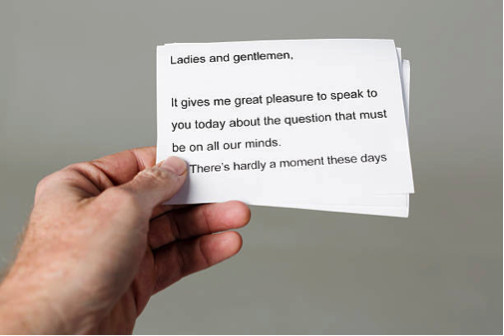Social anxiety disorder is the most commonly diagnosed anxiety disorder and the third most common mental health condition in the world. The primary feature of social anxiety disorder is a persistent fear of a social or performance situations in which negative evaluation may occur. Along these lines, one of the main reasons for this high prevalence rate for social anxiety disorder is demonstrated within a simple truth about social situations in general: technically, any social situation has the potential to trigger a negative evaluation from others. For example, though unlikely, ‘technically’ being in a drive through at a fast food restaurant could result in one receiving a negative evaluation from others.
We also know from decades of research that cognitive behavioral therapy (CBT) is the gold standard treatment for social anxiety specifically and anxiety disorders in general, with exposure to anxiety provoking situations being an essential ingredient to successful treatment. However, research indicates that a large percentage of individuals experience a return of their social anxiety upon successful treatment. Nevertheless, the million dollar question in this regard is as follows: why does anxiety and fear of social situations return following successful treatment and, more importantly, how can we prevent this from happening following treatment? Indeed, what is the endgame for our treatment outcome?
“Time” Machine

The length of time that passes following successful treatment of social anxiety is relevant here. In other words, clinical levels of social anxiety could possibly return following treatment if the individual fails to consistently engage in social interactions. One way to eliminate this return of fear due to the passage of time, what we refer to as spontaneous recovery, is to not only engage in frequent exposures to social-anxiety provoking situations but also by confronting more than one fear cue at once. For example, if an individual is hypersensitive to heart palpitations during a social interactions and also hypersensitive to ordering food at a restaurant, one would address both of these fears separately and then intentionally increase heart palpitations (for example, by running in place in the bathroom before ordering) then immediately order food at a restaurant. In essence, this approach would “violate my expectation” that “if I order food while having a fast beating heart, surely I will make a fool of myself.” This would increase the likelihood of successful management of social anxiety in the endgame.
Switch it up

Another problem that often arises following successful treatment of social anxiety is when therapy occurs in a limited number of situations. In other words, fear of social situations can often reemerge if anxiety provoking situations are only confronted in a similar context, with certain people, the same time of day, or other consistent variables. We refer to this effect as context renewal. A relatively simple way to prevent this renewal of social fear is “switching up” the contexts in which exposures occur. For example, an individual would need to order food at both Chipotle and Qdoba, to engage in small talk with people from various cultural backgrounds, alter messages during social interactions, and change the time of day in which social anxiety exposures occur. Additional considerations would be engaging in exposures within unfamiliar situations alone and in the presence of others.
Mix and Match
Another ingredient of managing social anxiety long term is what we refer to as variability of exposures or “mixing up” a number of variables throughout exposure treatment. Research indicates that varying the degree to which anxiety is experienced throughout exposure tasks enhances the storage capacity of information that is learned (Bjork & Bjork, 2006). Traditionally, exposures proceed in a hierarchal fashion, from least distressing to most distressing. However, research indicates that varying fear levels throughout exposure treatment is a positive predictor of treatment outcome for public speaking anxiety (Kiranski et al., 2012). Moreover, varying the length of time between treatment sessions, randomizing exposures rather than proceeding in order, and changing the duration of treatment sessions are ways to enhance exposure treatment in the endgame.
Playing Fetch

There was a recent blog post identifying the silken trap of safety behaviors (read that here) and the detriment that safety behaviors can have on long term management of social anxiety. In short, removal of safety behaviors is an important strategy at maximizing treatment outcome for social anxiety. Ironically, an additional strategy that can be helpful toward the end of social anxiety treatment is “fetching” from your memory what you learned throughout treatment by using a retrieval cue. A retrieval cue is a tangible object that serves as a reminder of what you learned during exposure therapy for social anxiety and may include any number of objects, as long as the objects serve as reminders of what new learning occurred within the context of therapy. The caution, however, is that retrieval cues can become safety behaviors themselves. As such, retrieval cues are best utilized upon completion of treatment and should be used sparingly.
Conclusion
In sum, CBT is the most effective treatment approach for the management of social anxiety symptoms. Though social anxiety is a normal part of life, social anxiety can be debilitating when it creates significant distress and impairment in functioning. Once social anxiety is successfully managed, relapse prevention is important in order to maintain treatment gains long term. Important considerations in managing social anxiety include continuing to confront situations that are anxiety provoking following treatment, confronting different types of social situations, increasing the intensity of arousal when confronting social situations, and periodically using cues as reminders of what was learned during treatment. For further strategies on enhancing exposure therapy for anxiety disorders, refer to Craske et al., (2014).
Written by,
Kevin Chapman, Ph.D.
NSAC – Louisville
Bjork, RA.; Bjork, EL. (2006). Optimizing treatment and instruction: Implications of a new theory of disuse. In: Nilsson, LG.; Ohta, N., editors. Memory and society: Psychological perspectives. New York: Psychology Press; 2006.
Craske et al., (2014). Maximizing exposure therapy: An inhibitory learning approach. Behavioral Research and Therapy, 58, 10-23.
Kircanski K, Mortazavi A, Castriotta N, Baker AS, Mystkowski JL, Yi R, Craske MG. (2012). Challenges to the traditional exposure paradigm: Variability in exposure therapy for contamination fears. Journal of behavior therapy and experimental psychiatry. 2012; 43(2):745–751.











